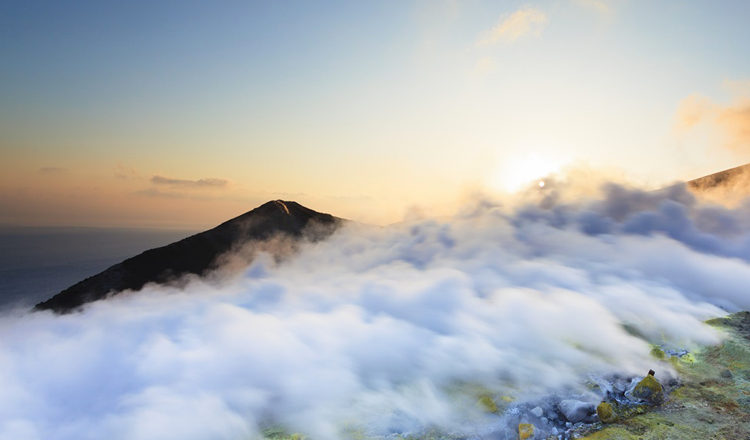The Aeolian Archipelago, with its seven islands, is the immersed section of a vast volcanic complex, prevalently under water, which extends for about 200 kilometres and which constitutes a structure proceeding curved looking onto, with it’s concave part, towards the centre of the Tyranean sea.
The immersed parts of the eruptive complex, the islands, were formed in the last million years, while the submerged parts are slightly older: the most ancient – about 1,3 million years-being the submerged volcano Sisifo, north-west of the island of Alicudi. From the research done on the most ancient products from the eruptions of the volcanoes present on each island the age of them was able to be deduced and recorded.
The oldest lavatic rocks were found on Filicudi, about 1,000,000 years ago, while the last emerged results from Alicudi, where lavatic rocks haven’t been found immersed longer than 90,000 years.
On Volcano and Stromboli volcanism is still active, while on the other islands it ceased between 5000 and 20,000 years ago, even if Lipari and the small islands near Panarea are present fumarolic manifestations, typical of the phase of post-volcanic decline. The magma of the Aeolian Islands is similar to that of the volcanoes which constitute the belt of circumpacific fire.
They demonstrate, in time, an evolution towards the more basic compositions (minor content of silex, which is the main element of magmas) and the richest in potassium.
Magmas of this type are characteristic of the area of subduction: an oceanic litospheric plaque slides under a continental, originating magmas which rise to form an arcs of islands or volcanic cordilleras, giving place to the generation of earthquakes that spread typically along an inclined plane.
In the southern Tyrranean the African plaque slides under the European one, and being rich in hydrated minerals it lowers the point of fusion of the rocks which are under the continental crust, meaning that they form magmas which tend to rise towards the surface giving origin to eruptions which caused the formation of the volcanic arc of the Aeolian Islands.
This then continues to become the terrestrial crust, which today are the Aeolian Islands is the result of the titanic play between the constructive forces and the destructive forces of nature which, in the course of millenniums, have modelled these islands, until each one of them has assumed their current form.
These islands have always attracted a lot of attention and interest from people eager to study them.. In the past 50 years they have become a great source of study, research ,and experimentation and verification for people who study the Science of the Earth.
It is interesting to note that the appearance which we call current, that is man of the third millennium, is very different from the that which was noted by man in the Middle Ages, that the islands of the Aeolian Archipelago were counted as eight; which in turn was different from that noted by man in the Roman period, who witnessed the birth of one of them and probably counted ten, and even more different again noted by man in the superior Neolithic age who came to inhabit these volcanoes at the end of the fifth millennium B.C… The evolution of this Archipelago is far from being over: instead of saying “the Aeolian Islands are seven”, it would be more realistic to say :”the Aeolian Islands are currently seven”.

